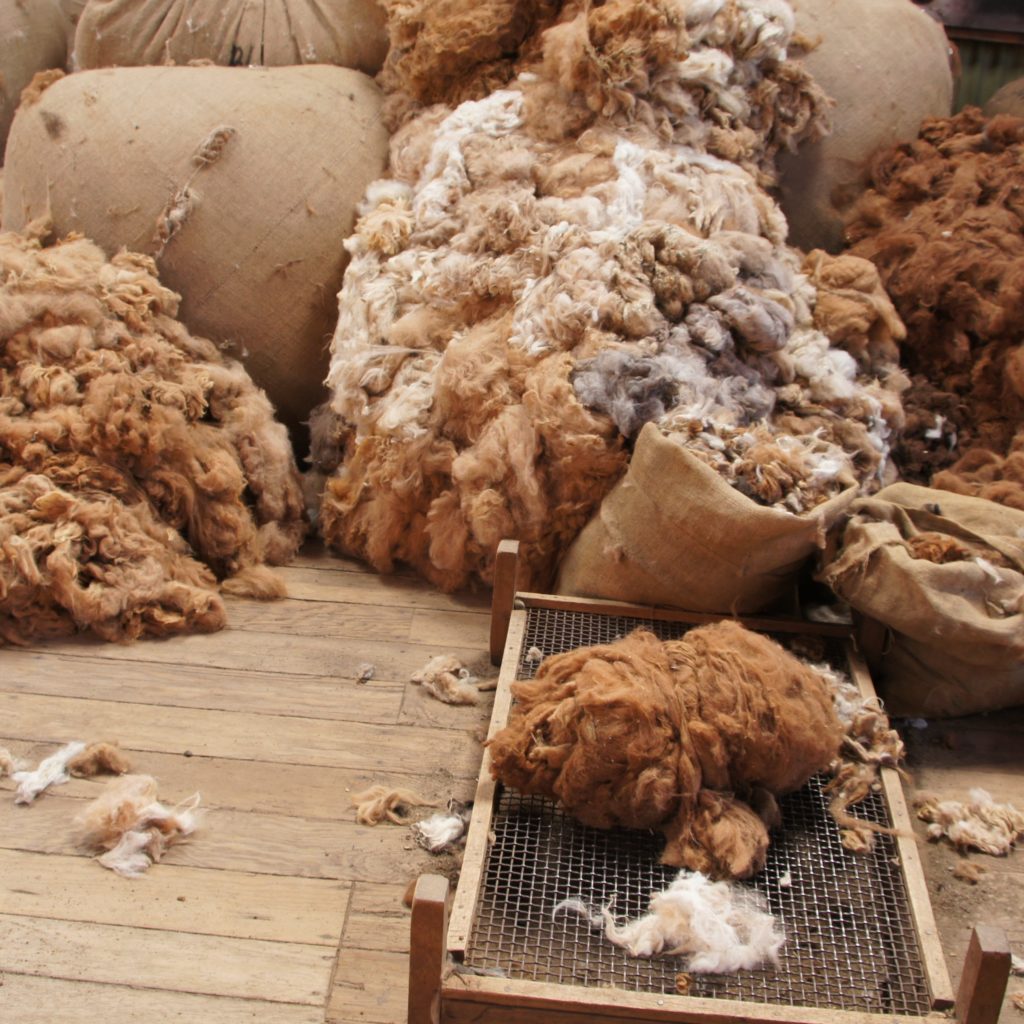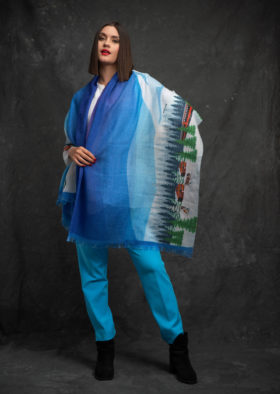alpaca
HiSTORy
Alpacas have been bred in South America for thousands of years. Vicuñas were first domesticated and bred into alpacas by the ancient tribes of the Andean highlands of Peru, Argentina, Chile and Bolivia.
Two-thousand-year-old Paracas textiles are thought to include alpaca fiber. Also known as “The Fiber of the Gods”, Alpaca was used to make clothing for royalty. In recent years, alpacas have also been exported to other countries such as the USA, Australia and New Zealand.
The Amerindians of Peru used this fiber in the manufacture of many styles of fabrics for thousands of years before its introduction into Europe as a commercial product. The alpaca was a crucial component of ancient life in the Andes, as it provided not only warm clothing, but also meat.


CAMELIDs
There are 4 species of Andean camelids:
1. The llama (Lama glama),
2. The Alpaca (Vicugna pacos) / Suri and Huacaya
3. The guanaco (Lama guanicoe) and
4. the vicuña (Vicugna Vicugna);
The global population of these camelids is mostly found in four Latin American countries: Peru, Bolivia, Argentina and Chile. But it is Peru that has the highest concentration of the alpacas, with 87% (approximately 4’800, 000 animals), of the total population.
The alpaca raising is between 3,800 and 4,700 masl. Being an economic activity whose importance lies primarily in the production of fiber, as well, of meat and other products,
heritage
Andean textiles represent a continuing textile tradition spanning at least ten thousand years. Today Andean weavers are known worldwide for their skills and rich traditions. For thousands of years before the arrival of the Spanish in the early 1500s, the weavers of ancient Peru created textiles that played important roles in ritual, political, and social life. They drew upon natural resources including cotton, the hair of alpaca and vicuña, and diverse plants and dyestuffs to produce textiles of stunning complexity and beauty. Nowadays, the Peruvian textile industry has ceased to be confined to the rural areas. A modern industry has emerged, combining the best of traditional know-how and contemporary techniques to continue an age-old textile heritage. AWANA Alpaca is a ethic Alpaca brand that preserves Peru’s weaving heritage working with women weavers and designing the hand made collection.

ALPACA FIBER
Alpaca fleece is the natural fiber harvested from an alpaca. It is light or heavy in weight, depending on how it is spun. It is a soft, durable, luxurious and silky natural fiber. While similar to sheep’s wool, it is warmer, not prickly, and has no lanolin, which makes it hypoallergenic.
Alpaca fiber is naturally water-repellent and difficult to ignite. Huacaya, an alpaca that grows soft spongy fiber, has natural crimp, thus making a naturally elastic yarn well-suited for knitting. Suri has no crimp and thus is a better fit for woven goods. Alpaca fleece is made into various products, from very simple and inexpensive garments made by the indigenous communities to sophisticated, industrially made and expensive products such as suits.The preparing, carding, spinning, weaving and finishing process of alpaca is very similar to the process used for wool.
ALPACA VALUE
Ancient Peruvians considered alpaca fibers as fit for dressing their gods. As much as 80% of alpaca production is concentrated in Peru, and competes in the international markets with fibers as exquisite as cashmere and mohair. Its exceptional quality is distinguished by its great versatility, available in ten natural shades of white, gray, brown, beige and black.
We have the finest and most luxurious fiber of the world, the alpaca, that is a resource that we need to add value through textile design to position the “Brand of Peru” in the global markets.

TYPES
There are two types of alpaca: Huacaya (which produce a dense, soft, crimpy sheep-like fiber), and the Suri (with silky pencil-like locks, resembling dreadlocks but without matted fibers). The Suri is thought to be rarer, most likely because the breed was reserved for royalty during Incan times. Suris are often said to be less cold hardy than Huacaya, but both breeds are successfully raised in more extreme climates. They were developed in South America.
ALPACA HUACAYA













